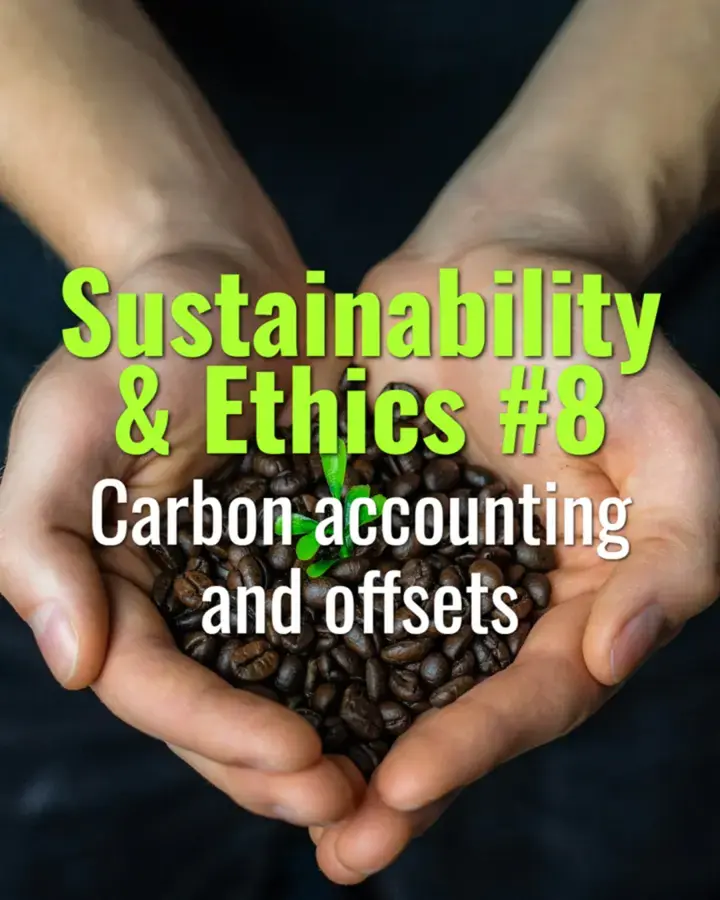Carbon accounting and offsets
How carbon accounting applies to the coffee supply chain, methods of calculating emissions, and the role of offsets in achieving sustainability goals.
- Coffee Basics Nerds
- 2 min read
Article 8 of 12 in Sustainability & Ethics/

What is Carbon Accounting?
- A system for measuring greenhouse gas (GHG) emissions across the coffee value chain.
- Divided into Scopes (per GHG Protocol):
- Scope 1: Direct emissions (on-farm fuel, roasting equipment).
- Scope 2: Indirect energy emissions (electricity for milling, cafés).
- Scope 3: Supply chain emissions (fertilizer production, shipping, packaging, brewing at consumer level).
Coffee’s Carbon Hotspots
- Farm Level: Fertilizer use, deforestation, irrigation.
- Processing: Water pumping, mechanical drying.
- Transport: Shipping green coffee globally.
- Roasting: High energy consumption.
- Consumption: Espresso machines, milk steaming add significant footprint.
Measuring & Reporting
- Tools: Life Cycle Assessment (LCA), Product Category Rules for coffee.
- Companies increasingly required to disclose emissions (EU CSRD, U.S. SEC proposals).
Carbon Offsets
- Mechanisms where companies finance projects that reduce or capture CO₂ elsewhere (e.g., reforestation, renewable energy).
- Types:
- Afforestation/reforestation projects.
- Renewable energy credits.
- Soil carbon sequestration.
- Offsets help achieve carbon neutrality, but should not replace direct reductions.
Criticisms of Offsets
- Quality varies; some projects overstate benefits.
- Risk of greenwashing if companies rely only on offsets.
- Best practice: prioritize reduce first, offset remaining.
Strategies for Coffee Companies
- Invest in energy-efficient roasting, renewable power for facilities.
- Support agroforestry at origin (carbon sequestration + biodiversity).
- Provide transparency on footprint reporting and offset sourcing.
Summary
Carbon accounting identifies where emissions occur across the coffee chain. While offsets (like reforestation or renewable energy) can balance residual emissions, meaningful action comes from reducing emissions at source first and using offsets responsibly.